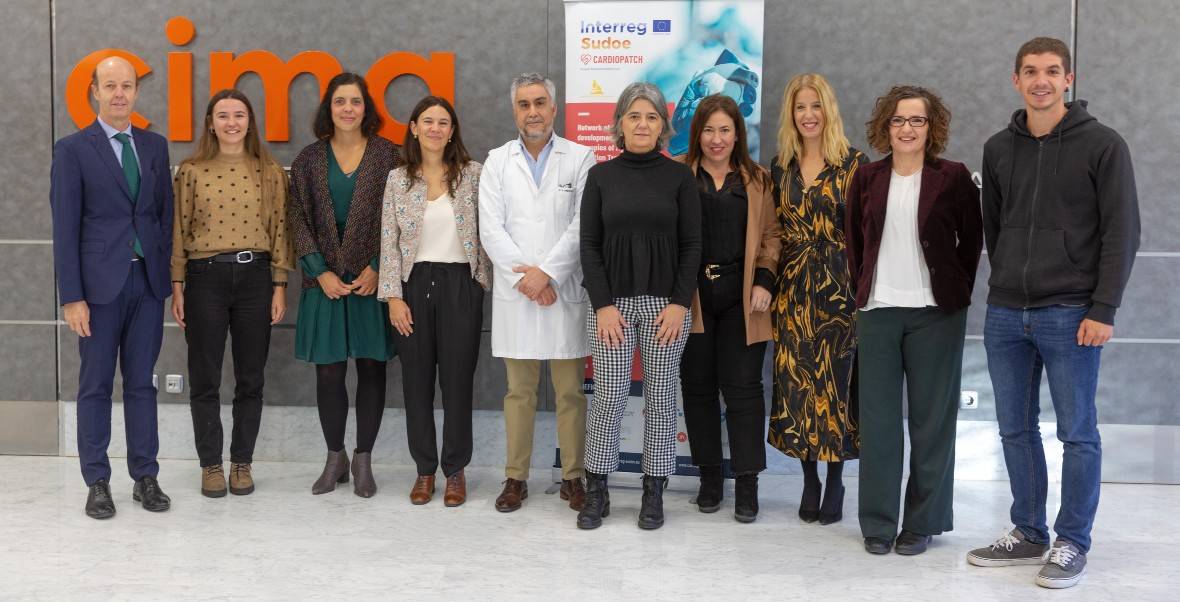Cooperation and increased funding are key to developing excellent projects in personalized medicine
Representatives from the healthcare and biotechnology sector of Navarra and the Basque Country have participated in the symposium "Synergies between healthcare agents and 3D printing", organized by the Cima University of Navarra and the Leartiker technology center

November 22, 2022
Half a hundred professionals from the healthcare and biotechnology sector from Navarra and the Basque Country participated in the symposium "Synergies between healthcare agents and 3D printing". At this meeting, organized by the Cima University of Navarra in collaboration with Leartiker, different representatives of biotech companies and technology and research centers shared the advances and challenges facing personalized medicine in these two regions.
Felipe Prósper, director of the Cell Therapy Area of the Clínica Universidad de Navarra and director of the Cima Regenerative Medicine Program, inaugurated this conference organized with "the aim of strengthening ties and creating synergies by exploring new possibilities for collaboration in the development of excellent projects in personalized medicine ."To achieve this objective, Uxue Itoiz, Director General of Industry, Energy, and Strategic Projects S4 of the Government of Navarra, pointed out the importance of establishing solid collaborations to "go further and better."
The companies and technological centers Optimus 3D, I+Med, Izasa Scientific, Naitec, and Viscofan, participated in the meeting. These centers, specialized in different areas such as biomedical engineering, research, and innovation in health applications or the development of technological solutions for improving products and processes for patients, shared their projects and future proposals for the advancement of personalized medicine.
Keys to developing projects of excellence
During the round table discussion "New opportunities for companies in the healthcare sector," the speakers agreed that it is essential to cooperate and secure more funding to develop excellent projects. "It is necessary to seek resources for the development of long-term projects," said Estíbaliz Armendáriz, project manager at NAITEC. Gloria González-Aseguinolaza, director of Innovation and Transfer at Cima Universidad de Navarra, added: "to progress in this field, greater support from the administrations is necessary to develop projects with practical objectives to reach patients." In addition, Fernando Oharriz, CEO and co-founder of Optimus 3D, pointed out that another of the keys to the progress of R&D in healthcare "is to speed up the regulatory processes within the sector ."In turn, "it is essential to strengthening relations between companies, technology centers, research centers, and hospitals," concluded Blanca Jáuregui, Viscofan's R&D director.
Mikel Irujo, Minister of Economic and Business Development of the Government of Navarra, closed the symposium by pointing out the rapid progress of personalized medicine in Navarra. He remarked that "personalized medicine is one of Navarra's developing industrial and technological sectors. In two decades, it has gone from having a residual presence in our community to being a sector made up of 68 companies, with a turnover exceeding 660 million euros last year and nearly two thousand researchers".
This meeting is part of the CARDIOPATCH project, a European consortium coordinated by the Clínica Universidad de Navarra, which brings together partners from Spain, France, and Portugal. This project combines regenerative medicine and 3D printing technologies to develop an innovative patch capable of regenerating damaged tissue after myocardial infarction.